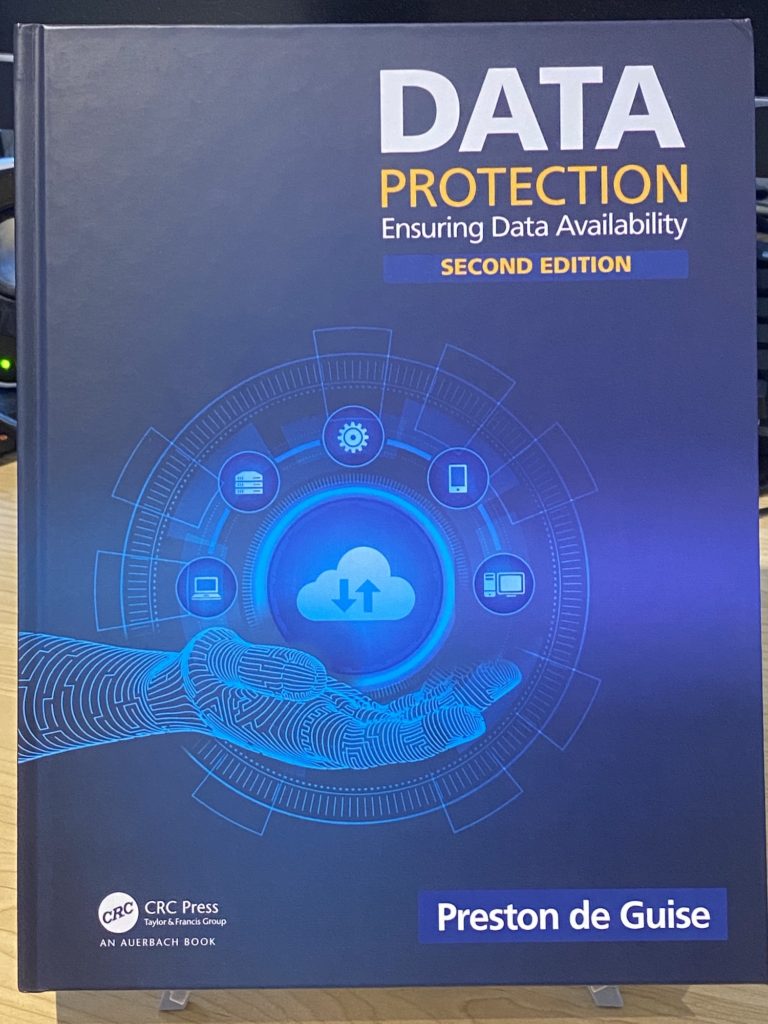Last week saw the release of PowerProtect Data Manager (PPDM) 19.5. That’s the fifth release of PPDM since its inception, and the second for 2020. There’s a raft of new features and updated to PPDM in this release, and it’s worthwhile taking a spin through the release notes to see what’s happened between 19.4 and 19.5.
So let’s start with VMware:
- You can now select objects at a container level to include in a protection policy.
- The option to exclude Windows swap file, page file and hibernation files from backup within virtual machines.
- The capability to recover virtual machine tags and categories.
- The ability to choose between making a VM protection policy optimised for capacity or performance.
- Datastore capacity checks: you can set datastore free-space thresholds for warnings or failures for backup and recovery operations.
- The number of concurrent backups per vCenter has been increased from 100 to 180, and you’ll be alerted if the concurrent backups exceed a threshold.
VMware isn’t the only virtualisation system that’s seen some love. PPDM now supports concurrent use of vProtect, which gives you the capability to provide backup/recovery and snapshot management to a raft of virtualisation systems including Oracle’s virtualisation platform, KVM, and so on.
Improvements to the PPDM disaster-recovery process include:
- You can now view the status of disaster recovery backups for the search engine cluster.
- When performing a PPDM DR, you can keep the PPDM server in recovery mode post-recovery, so you’ve got time to review and adjust any configuration items you want before the recovered PPDM executes any policies.
Speaking of the search engine cluster – it now truly can be a cluster. When the search engine cluster was first introduced, it was initially a cluster of one to get the functionality enabled. Now you can deploy up to five search engine cluster nodes to get search enabled across a much larger set of systems.
There are some enhancements to the upgrade process from, including:
- Manually run the pre-check when you’d like without committing to an upgrade
- You have to acknowledge any critical alerts in the system prior to performing an upgrade.
PowerProtect Central, the SaaS reporting system for PowerProtect has seen some updates, too! That includes:
- Historical activity information for each asset you’re protecting.
- Detailed summary of assets that have the most protection failures.
- Graphical view of protection summaries.
- Last-24 hour asset protection summary.
- An audit report that pulls together the audit reports of all your PPDM servers.
PPDM can now run in AWS, providing protection for Oracle, SQL, SAP HANA databases, virtual machines in VMware Cloud, Kubernetes clusters in AWS, and the filesystem agents. Backups are written to AWS simple service buckets.
Kubernetes support gets a boost, too – you can now perform application-consistent backups of databases residing in Kubernetes pods, without the need for any agent installation. You can so restore a Kubernetes namespace to an alternate cluster.
On-premises Exchange gets support, regardless of whether it’s a standalone system or a DAG-based environment.
Some of the other enhancements in this version include:
- Support for updating the Boost passwords used for protection policies – not just from a REST API as before, but now using the PPDM UI as well.
- Creating a policy no longer automatically triggers an immediate full backup – instead, it’ll run based on the backup schedule.
- There’s now the option to perform an ad-hoc execution of a backup policy (previously it was just individual assets you could run ad-hoc backups for). Hence, even if you’d like new policies to get an immediate backup, you can still start it manually.
- The user interface now supports file-level recovery processes block-based backups or traditional filesystem agents.
- You can backup and restore non-LVM physical disks for Linux.
- Some general improvements to the installation system.
If you want to see the upgrade process taking a PPDM system from 19.4 to 19.5, I’ve recorded my upgrade session:
And that’s another PPDM release!
Hey, before you go, don’t forget that the second edition of Data Protection: Ensuring Data Availability is now available from all good bookstores, and even direct from the publisher.


1 thought on “What’s new in PowerProtect Data Manager 19.5?”